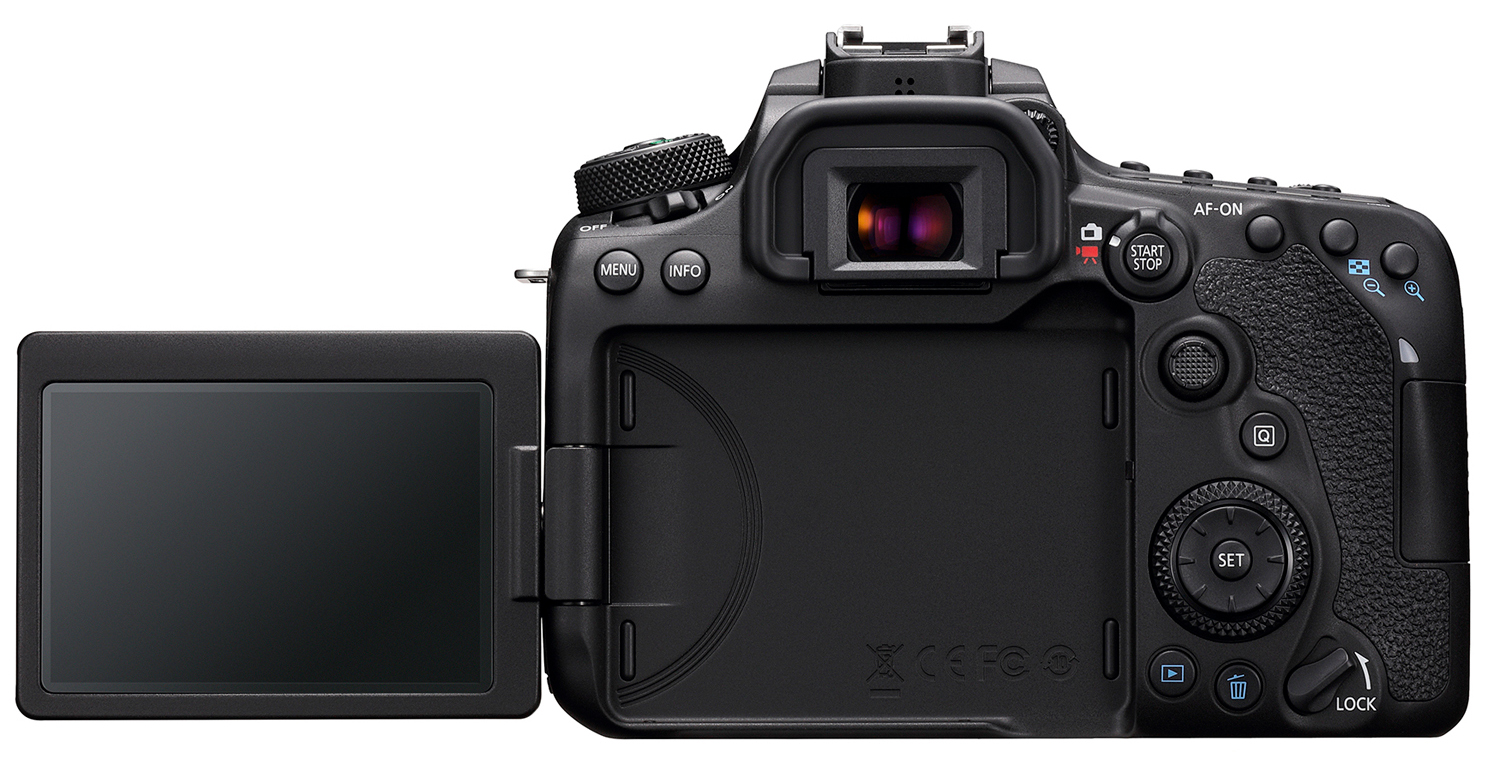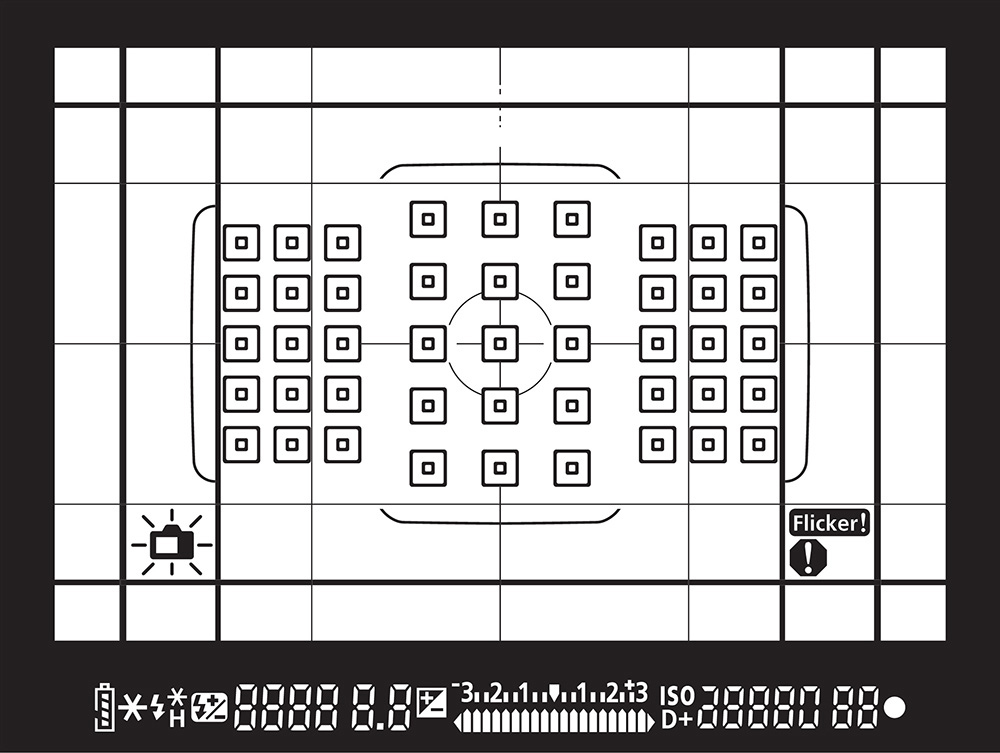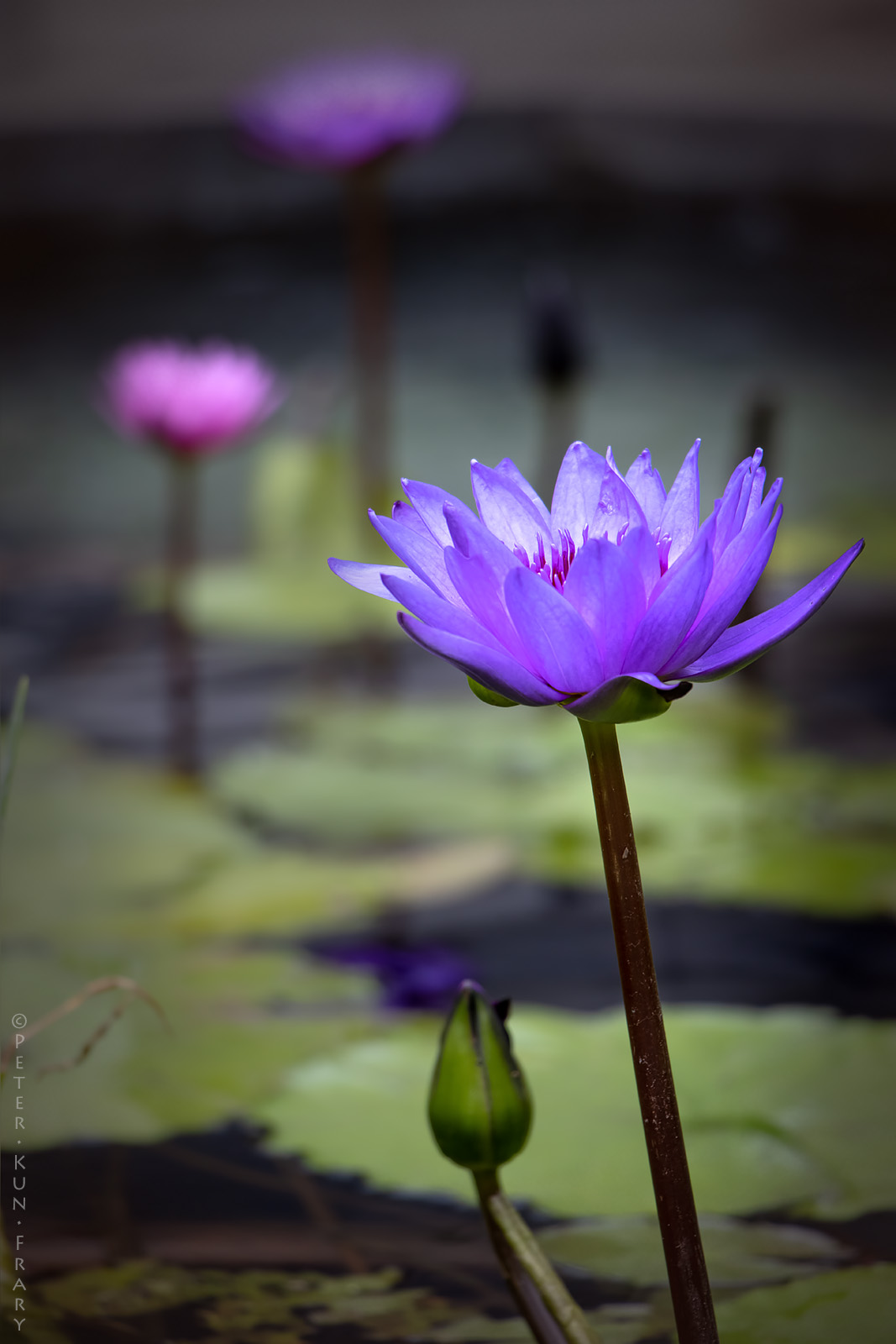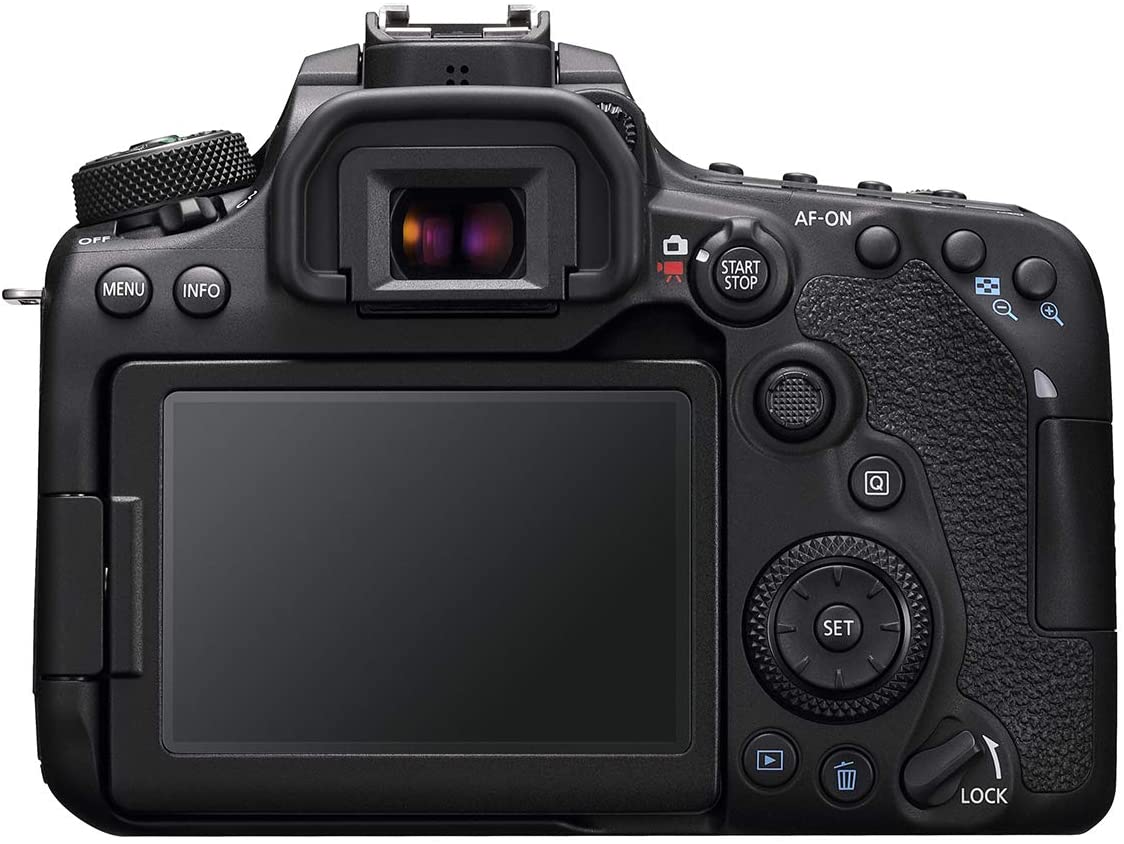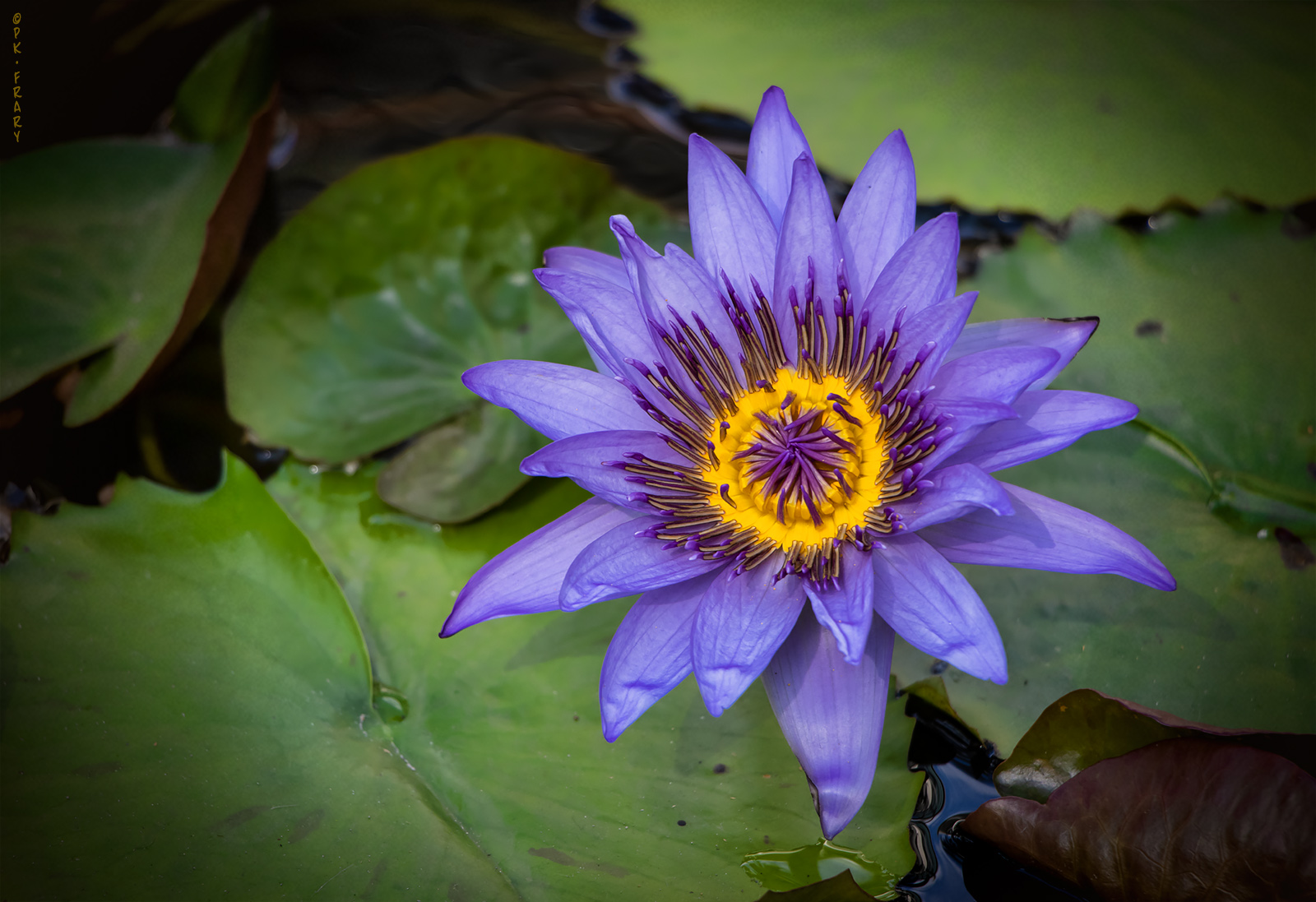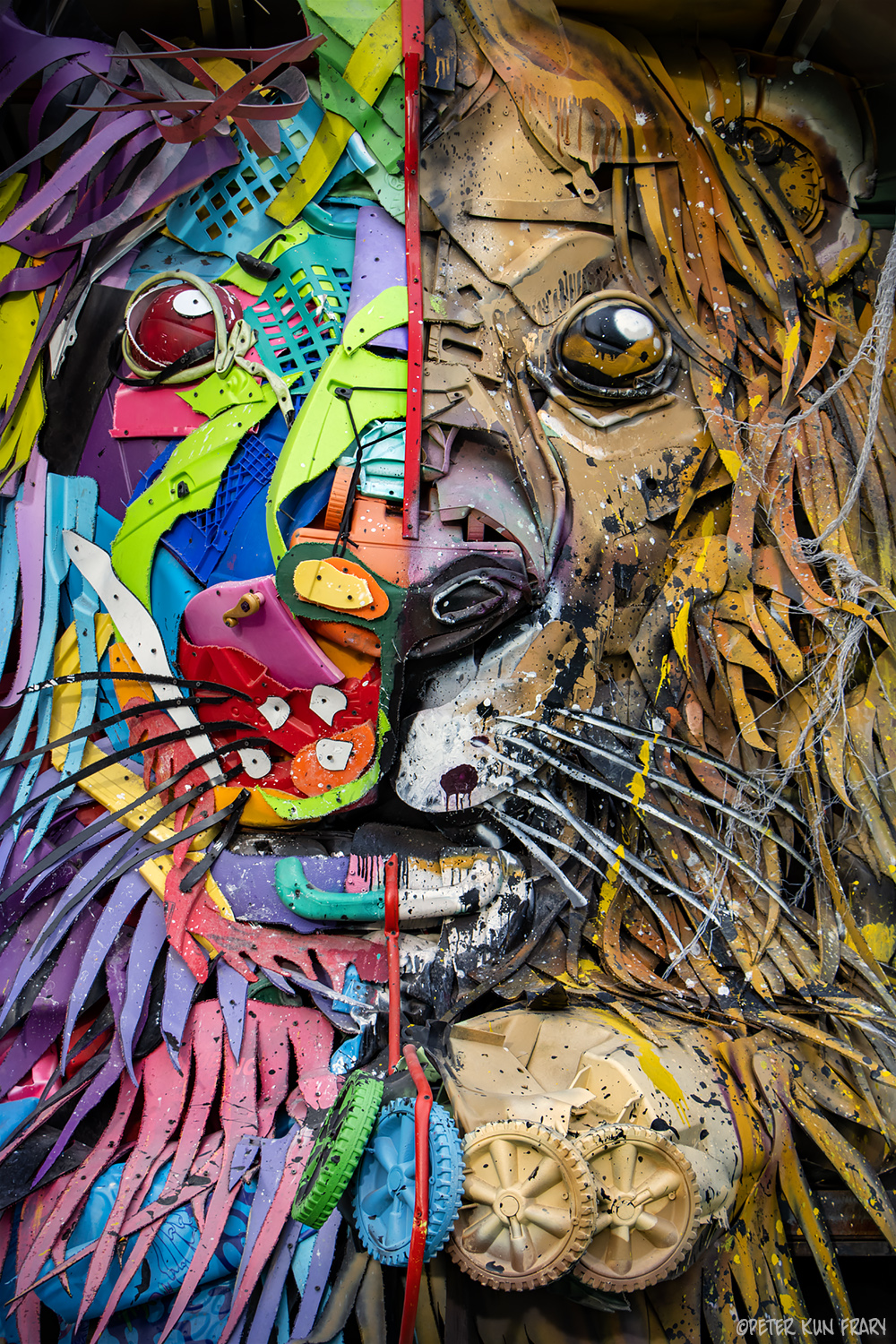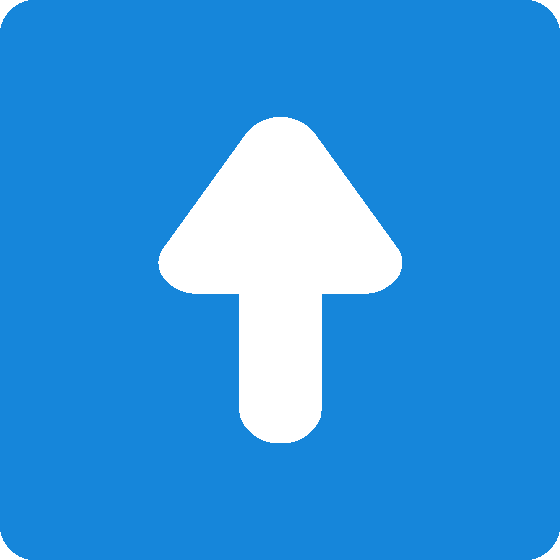|
. Canon EOS 90D ReviewLast Canon XXD DSLR Design Peter Kun Frary. .
|
FEC and White Balance
The 90D lacks dedicated flash exposure compensation (FEC) and white balance (WB) buttons. These functions are on the Q-screen but dropping camera from eye to use the screen may cost you a shot. I can live without a WB button, but I ride FEC when using flash and prefer use by feel controls. Button functions can be customized so I assigned FEC to the SET button, allowing FEC input while turning the rear dial and looking through the viewfinder. Well sort of. Unlike the 80D, the FEC scale on the 90D does not appear in the viewfinder, but on the rear LCD!
Tab Menu
The Tab Menu is the interface for changing camera features such as AF, video, button and dial customization, etc. To access the Tab Menu, press the MENU button on the back of the camera. Once activated on the LCD, you'll find six icon tabs grouped by category. Each icon category is color coded (red, blue, etc.) and has one to six numbered menus. Numbered menus may have up to seven sub-menus. Menus may be navigated by touchscreen or via wheels and buttons.

Unlike the prior 70D/80D, many settings for video and stills are separate and not available outside of the mode. For example, wireless remote release is enabled in stills mode, it is not enabled in video mode and vice versa.
My Menu
The sheer number of items in the Tab Menu can be overwhelming, especially in the field when you need to quickly change something. Canon helps us simplify by allowing user selected menus to be grouped under the
Star tab for quick access. These custom menus—called MY MENU in Canon speak—will vary according to your taste and shooting style. I have three numbered menus of favorite settings but you can have more, less or choose not to use My MENU.
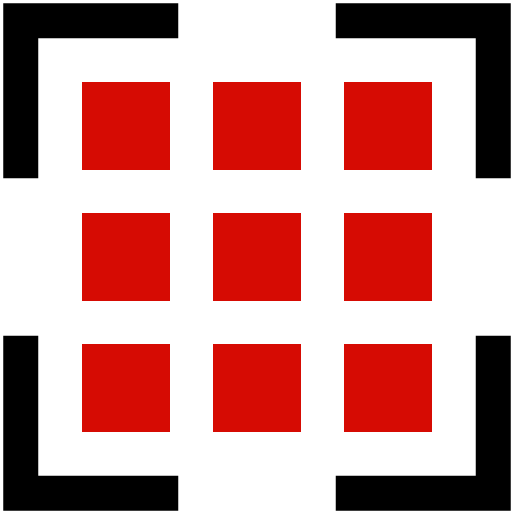 Auto Focus
Auto Focus
The 45-point cross-type phase-detect AF system boasts a couple tweaks but is basically the same as the 80D. The main upgrade is it can now focus with certain F8 lenses using 27 points. Thus, a F5.6 telephoto with 1.4X Extender can now use auto focus. Also new is the ability to use iTR AF face priority detection while shooting through the optical viewfinder.
iTR stands for Intelligent Tracking and Recognition. Face detection technology is somewhat rare on DSLRs but common on mirrorless cameras. The 220,000 pixel auto exposure (AE) RGB sensor guides tracking of faces with the optical viewfinder in 45-point and zone modes. I found iTR AF locked onto faces lickety-split and rarely missed. It's a great mode for social events, especially if you've enjoyed a few too many cold ones during the shoot. Selfie shooters will now have razor sharp eyeballs to sprinkle all over social media.
EOS iTR AF face priority detection can be disabled in the menus if desired.
45-point AF Array | 62% horizontal and 48% vertical coverage | Photo courtesy Canon Inc.

Focus Modes
The 90D has all the AF modes of the 80D—single-point AF, zone AF, large zone AF and 45-point automatic selection AF—plus single-point AF with reduced size, i.e., spot focus. Spot focus is my favorite AF mode for macro as it allows a precise lock on a tiny point of contrast. For general shooting, I mainly use zone AF and move it around as needed with the multi-controller.
LiveView AF
LiveView AF has similar modes as the viewfinder and then some. The big deal is the 5481 point AF in LiveView with 88% horizontal and nearly 100% vertical sensor coverage. Do I ever need to focus on the edge of the frame? Nope, but it's there when you need it. And you can use the shutter button or poke the screen with your finger like an iPhone!
Eye AF—standard on EOS R series and recent M series mirrorless cameras—is a new 90D AF mode where the camera detects a human face and subsequently locks focus on an eye. It works great at close range even in subdued interior lighting.
LiveView has a few more tricks up its sleeve. For example, tap the subject on the touchscreen, half-press the shutter button and the camera tracks the subject across the screen using AI Servo.
As much as I like LiveView, I mainly use it on a tripod in single point mode for macro and studio shots. Holding a DSLR at arm's length in the tropical sun isn't practical or steady.
Purple Lotus | EOS 90D and EF-s 18-135 3.5-5.6 IS USM
AF Microadjustment
Like the 70D and 80D, the 90D allows AF Microadjustment (AFMA): individual lenses may be calibrated for optimal sharpness. Zoom lenses may have two calibrations: one for the wide end of the range and another for the long side. For example, my EF-s 18-135 3.5-5.6 IS USM needed +7 at 18mm and +5 at 135mm to be critically sharp. My EF 70-300 4.0-5.6 IS USM is perfect at AFMA default (0). Settings are stored in camera memory and used each time the lens focuses with the 45-point array. Using the Dot Tune method, it took me about 15 minutes to calibrate each lens.
Dual Pixel AF (on-chip contrast focus) doesn't need calibration. Thus, images taken with Dual Pixel AF are an excellent base of comparison while calibrating lenses for the 45-point array.
AutoISO
The AutoISO feature sets ISO according to changing lighting conditions, maintaining a reasonable shutter speed for hand held photography. The 90D sports the latest and greatest AutoISO iteration: works in manual (M) mode and is programmable. In M mode, set desired shutter speed/F-stop and ISO scales up and down with changing light, maintaining proper exposure. Thus, M mode becomes a semi-automatic mode. Exposure compensation (EC) works in M mode with AutoISO and may be set on the Q-Screen.
At default, AutoISO is set to favor shutter speeds near the one/focal length ratio. The default is too slow for me but AutoISO can be programmed to control minimum shutter speed: in the ISO speed settings menu adjust default shutter speed to faster or slower than the default. I programmed my 90D's AutoISO 1-stop over default.
As good as AutoISO is, there are situations where manual setting of ISO yields a better result. I set ISO manually when using flash, shooting in studio lighting or using a tripod for long exposures.
Romero Creations Baritone 6 String | EOS 90D & EF 15-85 3.5-5.6 IS USM

 Flash
Flash
The popup deploys at the touch of a button or, in Intelligent Auto Mode, auto erects. It may also serve as master/trigger for wireless slave capable Canon Speedlites. Popup flash range is limited but works fine for close snapshots or fill-in. Flash images were well-exposed using the popup and 430EX MKII.
The main gotcha with AutoISO is flash: defaults to ISO 400 no matter what mode used or light level. When using fill flash in bright light, the background blows out due to the combination of low maximum sync speed (1/250 sec.) and high ISO. My solution is to manually set ISO 100, resulting in a stop or so of exposure leeway. In low light I prefer slow sync to blend ambient light with fill, and ISO 400 is often too slow, resulting in blurring. I dial in ISO 800 or 1600 for a sharp background and fill flash makes the subject pop.
 Image Quality
Image Quality
No scientific measurements but my observation is 90D image quality is slightly improved over the 24MP CMOS in the 80D. RAW images converted in DPP reveal pleasing detail, color rendition and noise control. However, in most shooting situations, these improvements are not something I'd notice beyond the increased resolution. And, yes, I crop more often now. Image improvement is most noticeable in low light where I can see a small reduction in noise compared to the 80D, especially at high ISO.
Buddha in the Beer Hall | EOS 90D and EF-s 18-135 3.5-5.6 IS USM

 Video
Video
The 90D is principally a still image camera. However, video is a well implemented feature, ideal for video bloggers and performance artists. Indeed, I only use the video features for my music performances and instructional videos. Canon Log and time code are not included, so if you're planning to take your video productions beyond YouTube and Facebook clips, the 90D isn't the camera for you.
Through The Eyes of Love | Peter Kun Frary | 90D, EF-s 18-135 3.5-5.6 IS USM, Tascam DR-60D MKII and Neumann KM-184 mics (1080P)
ALL-I and IPB?
The 80D allows a choice between ALL-I and IPB, and a choice between MOV and MP4 output. The 90D only records IPB and MP4. Nevertheless, HD video with IPB compression is a little less noisy in low light and slightly more detailed than the 80D. Not an earth shattering difference but welcome. Thus, the ALL-I omission is irritating but not a deal-killer.
The 4K (24 or 30P) option is full frame width! You have the option of using cropped 4K, if you need extra reach. My old Mac Mini (7i 4-core CPU and 16 GB RAM) struggled with 4K video editing—overheating within minutes—and so I stuck with 1080P initially. After I upgraded to an iMac Pro (3.2 GHz 8-Core Intel Xeon W and 32GB RAM), I noticed little or no change in Final Cut Pro processing time compared to 1080P. Plus, downsizing 4K to 1080P looks really good—sharper than regular 1080P. Here's a sample of one of my 4K v-blog videos shot at the 30P frame rate. Camera settings were all manual: exposure, WB (4500K), ISO (640) and audio.
"How To" Guitar Video 4K | 90D, EF-s 18-135 3.5-5.6 IS USM and Sennheiser MKE 400 shotgun mic (camera preamps)
One thing about 4K video is it eats batteries faster than 1080P. I can shoot an entire concert on one battery at 1080P. With 4K, I need an extra battery or two.
Video Exposure Modes
There are three video exposure modes: Full Auto, Program and Manual. If you set Av, Tv, or B, the camera reverts to Program mode. Program mode sets aperture and shutter speed and but allows user input of AF mode, white balance, ISO and exposure compensation. Manual lets you choose the aperture and shutter speed. However, Manual mode also works with Auto ISO, achieving a quasi-auto exposure mode by changing ISO. Exposure compensation also works in Manual mode with Auto ISO enabled.
For YouTube work I use manual exposure and dial in ISO and white balance. Once adjusted for studio lighting, there are no worries about WB balance or exposure changing due to a backdrop or clothing change. It stays put.
The Sound of Silence - Leeward Coast Ukulele Band | 90D and EF-s 18-135 3.5-5.6 IS USM and 80D and EF-s 10-18 IS STM (1080P).
Movie Servo
Dual Pixel movie servo AF is noticeably improved over the 80D: more accurate tracking, faster and less prone to hunting in low light. You can focus on your subject by using the shutter button, AF-on button or touching the screen with your finger. Even more impressive, you can drag your finger across the LCD and it smoothly pulls focus from near and far objects! And, of course, Movie Servo AF, like LiveView, includes Face Detect + Tracking and Eye Detect AF options.
With all that said, I prefer to keep it simple and use area focus with movie servo for my YouTube videos. Of course, I'm just sitting on a chair playing guitar or 'ukulele.
Betty Lou of '52 Melody Demo | 90D, EF-s 18-135 3.5-5.6 IS USM and Neumann KM 184 mics (1080P)
White Balance
Auto white balance (WB) nails color temperature most of the time, even in mixed lighting. Like most EOS cameras I've owned, the 90D leans towards the warm side. The one situation Auto WB fails are scenes filled with lots of pinks and reds, resulting in a 1000 degree jump to the warm side. However, I avoid "surprise" WB by setting it manually for studio video and photo sessions. Unlike the Rebel series, the 90D uses a scale marked in kelvin (K) for ease of setting.
Clean HDMI Output
The 90D is the first XXD series camera with clean HDMI output for recording to an external video recorder. When this option is selected, recording to the camera memory card is disabled.
Joseph Haydn, Minuet - Leeward Coast Ukulele Band | 90D and EF-s 18-135 3.5-5.6 IS USM and 80D and EF-s 10-18 IS STM (1080P)
Audio
Built-in audio is essentially the same as the 80D: manual or automatic levels, omnidirectional stereo mics and a stereo mini jack for monitoring. Audio is okay for casual clips but the mics and preamps are too noisy for serious music productions. I use built-in audio as a guide track for outboard audio, preferring Tascam recorders and external mics for music videos.
However, if you use the onboard preamps, use manual audio levels for best results. Auto levels surge gain up and down, increasing hiss greatly during quiet passages. Set your external mic to the highest output gain—+10 or 20 dB—thus allowing lower levels on the camera and, subsequently, less preamp noise.
Sennheiser MKE 400 Mic | Mounted on a Canon EOS 90D with +20 dB set.
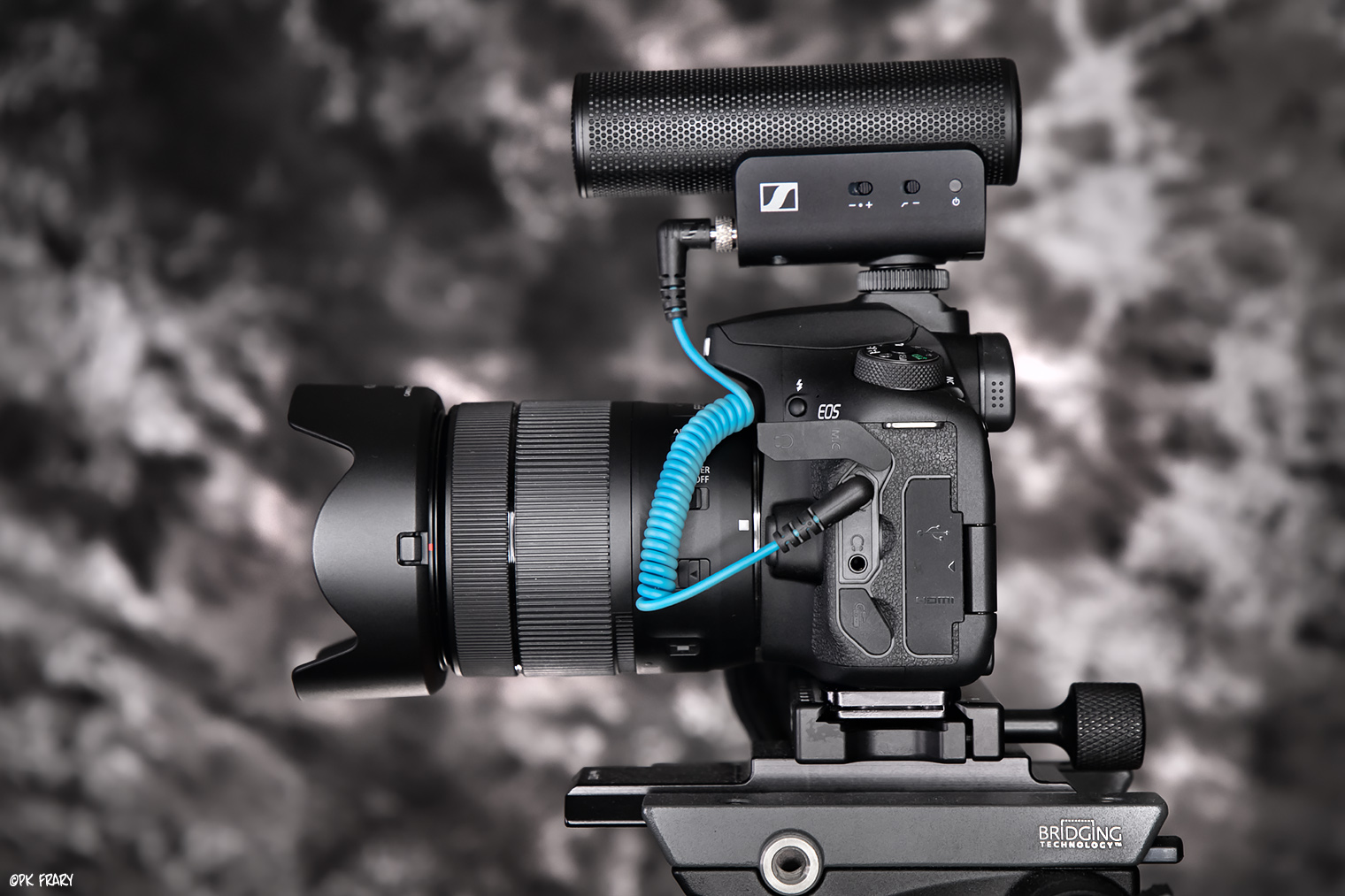
Cattle Egret | EOS 90D and EF 70-300 4.0-5.6 IS USM | AE in Program mode handled the back-lighting well.
 Connectivity
Connectivity
The 90D builds on the Wi-Fi connectivity features of the 80D by adding Bluetooth. With Wi-Fi enabled and the Canon Camera Connect app, you can diddle settings, fire shutter, zoom the Power Zoom Adapter PZ-E1, upload images and use LiveView on an iPhone/iPad, Droid or computer. It works well on both my iPhone and iPad (didn't try an iMac). Video may be monitored through Wi-Fi. Bluetooth is used to connect with accessories such as the Canon Wireless Remote Control BR-E1 and to "help" Wi-Fi connectivity.
Connecting with Wi-Fi to an iOS device is fiddly the first time but easy once setup, especially coupled with Bluetooth as an helper. With that said, I rarely use Wi-Fi. Why? When I get home, I upload to my iMac with a Lexar Pro USB 3 card reader: blazes compared to Wi-Fi and allows multiple cards uploads.
As a solo YouTube artist, I self-shoot most of my videos. Thus, use of the RC-6 Wireless Remote Controller or Canon Wireless Remote Control BR-E1 to start and stop video recording is a huge plus. Plus, these devices are small and easy to use compared to holding a guitar and iPhone.
Lion of Fremont East | EOS 90D and EF 18-135 3.5-5.6 IS USM
 Battery Life
Battery Life
The 90D uses the same battery type as the 70D, 80D, 5D MKII, 6D, R, etc., the LP-E6 series. The difference is the 90D shipped with a slightly stronger variant, the LP-E6N, but is compatible with the LP-E6 variants and new LP-E6NH. Shooting RAW with the kit lens, I easily get 1400+ images and still have a partial charge left, so 90D battery life is excellent. Of course, this is with Wi-Fi disabled, no live view and only minor chimping. As for video, I can shoot through an entire student recital on a single charge, over an hour of HD video clips, and still have juice to spare. Take a space battery or two if shooting 4K.
Arca Compatible Plates
Promedia, Kirk and RRS currently make dedicated Arca compatible plates for the 90D. Sunwayfoto makes an L-bracket. Sadly, the RRS 70D and 80D body plates I already have don't fit the 90D. Luckily, an old Promedia 60D body plate I tossed in a drawer a decade ago fits perfectly. It uses a pin to prevent twist (the tiny hole to lock the battery grip). It's less expensive and bulky than the newer Promedia, Kirk and RRS designs and I'm happy using the Promedia for tripod duty.
 Musings
Musings
The 90D is a highly competent design, quick on the draw and a significant upgrade over the 80D in terms of LiveView and video AF, still and video resolution, and noise control. For all intents and purposes, it a merging of Canon DSLR and mirrorless designs. Through the optical viewfinder it's a highly capable XXD series DSLR. In LiveView and video modes it's essentially an EOS M6 MKII. Amazingly, it's the first EOS DSLR in this price range without crippled 4K video—i.e., full use of Dual Pixel AF and no cropping. Even the mirrorless EOS RP lacks Dual Pixel AF in 4K mode and suffers a 1.72X crop in 4K. For a generalist shooter like me, the 90D strikes a nice balance of performance and cost. Without doubt this is the best XXD camera design ever and, sadly, the last of its kind. The thoughtful design and improvements add up to an enjoyable experience and excellent images.
The 90D is a great choice for video bloggers and YouTubers due to the eye and face priority movie servo and reversible LCD screen. However, if LiveView and video are your main mode of usage, you probably should consider an EOS R7, R10 or EOS R6 MK II instead of the 90D.
Better Late Than Never
I bought the 90D late in 2019 and normally write a review after about three months of shooting. Unfortunately, the COVID-19 lock-down hit and my travel plans and photo shoots were put on hold for much of 2020. Converting my college music courses to online format ate most of my spare time, albeit I got use the video features of this camera extensively. So this review is a year late...
Finally, if you're looking to buy an 90D, please buy it at Amazon. The referral credit will help support this site.
 Major Features
Major Features
Running Gear
32.5 MP CMOS sensor with with Dual Pixel AF | 22.3mm x 14.9mm (APS-
SD/SDHC/SDXC and Ultra High-Speed (UHS-I) memory cards
Wi-Fi and Bluetooth
Weather-resistant body
Focusing
45-Point Cross-type AF points | EV -3 to 18 sensitivity
5481 point AF in LiveView with 88% sensor coverage | EV -5 to 18 sensitivity
Eye AF in LiveView | Face detection in OVF
Continuous-Servo AF, Manual Focus, Single-Servo AF
Exposure
216-zone TTL metering with an approx. 220,000-pixel RGB+IR metering sensor
Evaluative, center weighted, partial (6%) and spot (3.8%)
Exposure Compensation: -3 to +3 EV (1/3 or 1/2 EV Steps)
Creative Zone: Fv (Flexible), P (Program), Tv (Shutter Priority), Av (Aperture Priority), M (Manual), B (Bulb), and 2 Custom Shooting modes (C1, C2)
White Balance: Auto, Cloudy, Color Temperature, Custom, Daylight, Flash, Fluorescent (White), Shade and Tungsten
Basic Zone Mode: A+ (full auto), SCN (Portrait, Landscape, etc.) and Creative Filters (special effects)
ISO Range: 1100-25,600 (expands to 51,200)
Viewing
100% coverage and .95x magnification optical viewfinder with LCD overlay
Articulated LCD | 3"/1.04 MP Display with touch interface
10 FPS with continuous AF via the OVF and 7 FPS in LiveView
Video & Image Formats
Image Formats: JPEG, RAW
4K UHD 24/30p and 1080p HD up to 120p video capture with no crop
Flash
Popup Flash GN: 39.4 ft./12m (at ISO 100) | 17mm coverage
1/8000 sec. to 30 sec., bulb, X-sync at 1/250 sec. | 1/16000 sec. in LV
Weight & Size
Dimensions (W x H x D): 141.0 x 105 x 77 mm (5.55 x 4.13 x 3.03″)
701 g/24.73 oz. (body and battery)
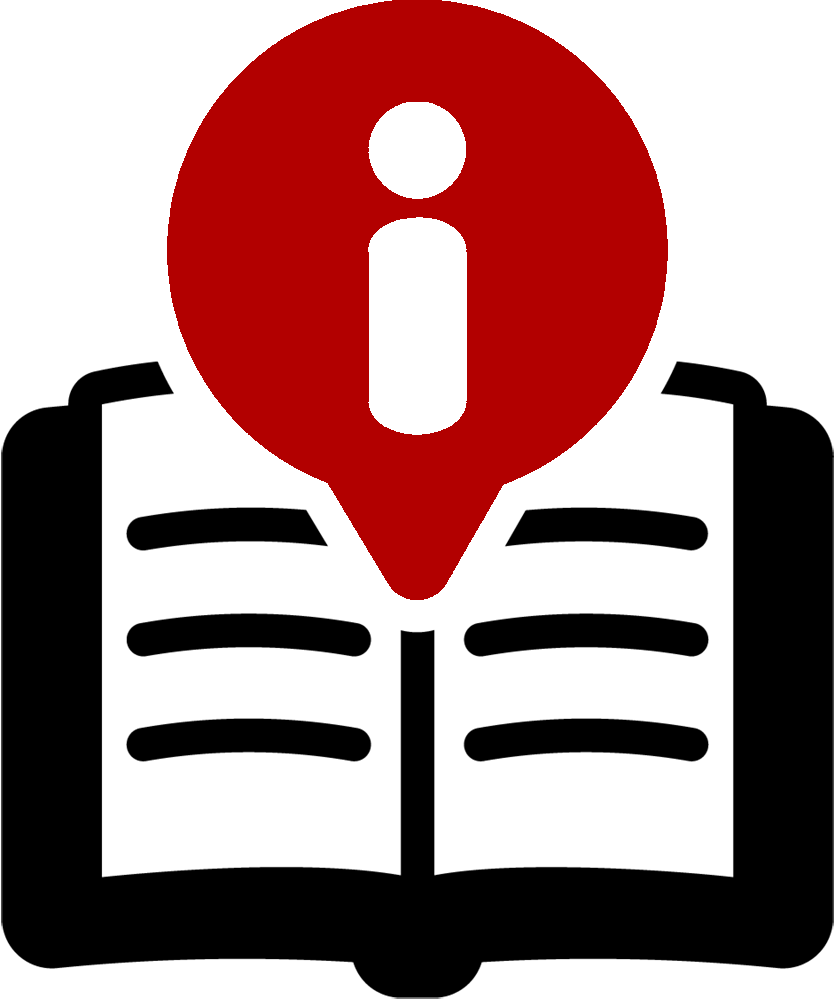 Source Materials
Source Materials
Canon EOS 90D Instruction Manual (CT2-D037-A). Canon Inc., 2019.
Created April 21, 2021 | Updated November 24, 2023
Sample Images

|

|
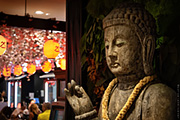 |

|

|
 |

|

|
 |
©Copyright 2021-25 by Peter Kun Frary | All Rights Reserved


